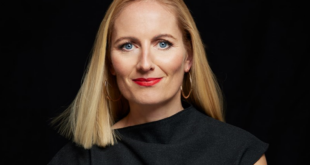 Isar Aerospace, part of the German New Space ecosystem, announced the successful closing of a 17 Million US Dollar Round A funding in December 2019 (as reported by SpaceWatch.Global – LINK). SpaceWatch.Global’s COO Torsten Kriening had a chance to speak with Daniel Metzler, Co-Founder and CEO of Isar Aerospace shortly after the announcement.
Isar Aerospace, part of the German New Space ecosystem, announced the successful closing of a 17 Million US Dollar Round A funding in December 2019 (as reported by SpaceWatch.Global – LINK). SpaceWatch.Global’s COO Torsten Kriening had a chance to speak with Daniel Metzler, Co-Founder and CEO of Isar Aerospace shortly after the announcement.
Daniel, first of all, congratulations on your successful funding round. Can you please give us an introduction to Isar Aerospace?
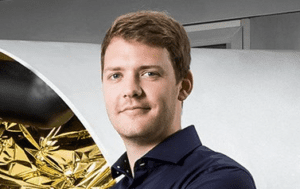
At Isar Aerospace, we’re trying to set the tone for the next decades of space transportation. We’re focusing a lot on transporting satellites and satellite constellations to space and doing that in an extremely flexible and low cost manner, meaning that you can now, for very little money, send your entire satellite constellation of tens or hundreds or even thousands of satellites to space according to your requirements. Crucially, you can do this within a matter of a few months instead of a few years.
Can you tell us more about the company? How many people do you employ today and expect to employ whether you are fully operational?
We were founded in early 2018. Nevertheless, we have grown to roughly 30 employees and we’re expecting to more than double this number over the course of the next few months. There’s still a lot of work to do. We’re very much looking forward to 2020 as an exciting development year.
How challenging will it be to find these human resources in Munich?
Actually, Munich is a globally respected aerospace hub so there’s a lot of talent. There are great universities here. There’s also a lot of young and motivated people. We’re not just looking at Munich, though. We are looking at the whole of Europe. We’re extremely confident that we can continue setting up an extremely experienced and motivated team. The track record of our hiring efforts over the course of the past few months have been proof of this.
Let’s talk about your round A that has just been finalised. 17 million Dollar is a lot for the German NewSpace market. How far can you go with that? This amount will not take you into orbit.
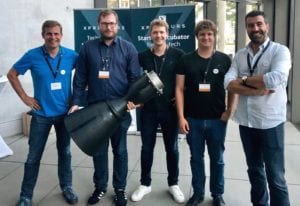
We will not get to orbit, correct. However, we will make considerable technological advancements. All of the funding will be used to scale the company to increase our infrastructure and to move forward with our technological development with extreme focus on our propulsion system. A lot of the funding is going towards getting our rocket engine to work. We are also scaling up our teams for structures, avionics and guidance navigation control. So we’re really tackling the entire suite of technological challenges we face leading up to the first launch.
In terms of financing, I assume you have more fundraising planned?
We expect at least one round over the course of the next year or two, so we can bring the technological development to a level where we can conduct our first test launch and then afterwards there might be a round for scaling. However, with the next funding round we should definitely be able to get to orbit and also double down on the extremely cost effective development we’ve been conducting so far. We have reached lots of milestones with fairly little money so far. We’re expecting to get advance quite far with the series A hitting a lot of important technological as well as commercial milestones and then go towards serious B rather sooner than later.
How much funding do you expect to require to make the project a reality?
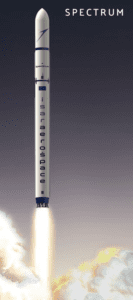
For the entire vehicle development, we expect it to be in the order of roughly 100 million Euros. The size of the next round will definitely be sizeable.
What market segment/s are you addressing at the moment?
We’re focusing a lot on satellite constellations, so not just single satellites, but multiple satellites that also need deployment across different orbital planes. We are looking at small one or three unit cubesats for rideshare missions up to satellites that weigh up to one tonne such as telecommunication satellites. In those cases, we would take just one satellite with a launch. If we take five satellites at 150 kilogrammes, for example, we could deploy all of these five satellites within the same orbital plane. Our second stage is also designed so that we can have multiple re-ignitions on the upper stage to bring the satellites to the desired targets point within the orbit.
Your Spectrum rocket can carry one ton of payload in the first configuration?
The maximum payload towards lower inclinations is up to one tonne. For a 500 kilometre sun synchronous orbit, it’s roughly 700 kilogrammes.
That’s a significant size. You spoke about the constellations. What market share do you expect to be able to address?
If you look at the size and mass of the satellites that comprise satellite constellations there’s obviously a huge number of very, very small satellites and cubesats. On the other hand, the total mass that is being launched to space in terms of cubesats is still fairly low compared to the big and promising satellite constellations such as OneWeb, Iceye, Starlink or Kuiper. Some constellations will definitely be challenging to get to the launch site, but the potential is huge. We have lots of requests for cubesat launches so we’ll also offer the flexible access to space at a low cost base that they require. We’re way below the $50,000 per kilogramme, but we’re really aiming to get to below $15,000 per kilogramme also for very small satellites.
Who are your main competitors?
Right now, we’re first in our class in Europe where we don’t have any market competitor developing a vehicle for up to one tonne of payload capacity now that the next iteration of Vega will be a bit bigger – up to 2.5 tonnes. We see the Spectrum launcher as an extremely suitable addition to the current launcher landscape within Europe. We offer considerable advantages to our European customers. Right now there’s a lot of import/export control for our European customers if they want to launch in India or in the US or in Russia, which we can completely eliminate by launching out of the European Union.
Rocket technology is about 60 years old. What is new and unique about your rocket?
A great deal within the within the space industry is still based on the heritage of the last 60 years. Actually, our company dates back to Harry Ruppe who was one of Wernher von Braun’s core team to develop the Saturn V rocket and later became professor at the Technical University of Munich.
I think that the focus for the next 10 to 15 years will be about how you manufacture extremely precisely, extremely reliably, but also at low costs. The manufacturing part is key, including the supply chain, which then also directly includes the entire engineering of the launch vehicle. We use proven technologies because, for example, in terms of additive manufacturing, while it is definitely nice for some specific parts of the rocket, there are more efficient ways for other components. We’re trying to combine the best manufacturing processes with an extremely smart, engineering-driven decision process within early development to realise a high-performing yet low- cost launch vehicle.
How deep is your value chain or your production chain?

We’re doing everything that is integral to our launch vehicle completely in-house, from the software design to manufacturing, as well as testing. We’re building up a vertical supply chain where it makes sense. For some specific parts it does make sense to source from partner companies who we carefully select.
How eco-friendly is your rocket?
The rocket reusability topic is very interesting. In terms of the very small launchers, it does not make sense to do propulsive landing because you just don’t carry enough propellant on board but with a one tonne launcher this already comes into consideration and this is definitely a topic we’re looking into. As propellants we use light hydrocarbons combined with oxygen. In terms of CO2 emissions for example versus kerosene or water vapour emissions versus hydrogen, we are a lot more eco-friendly. Our rocket will be somewhere in the range of 20 to 40% less emissions compared to other rockets per kilogramme of satellites deployed in orbit.
Is ITAR an issue for you?
We are developing an ITAR-free rocket to keep our geopolitical advantage in Europe. Obviously we use some standard software such as CAD licences, for example. But apart from that we’re trying to build a launch vehicle free of ITAR restrictions so that we can also dictate the regulation process involved in booking a launch vehicle to actually deploying the satellites into orbit.
So let’s talk about the launch options. As Germany does not have a spaceport, where would you like to launch from?
We’ve already signed agreements with different launch sites so we can secure our access to space from different launch pads that are required for different orbits. For example, for Polar and SSO missions, we will have different launch pads than for lower inclination orbits. Right now we’re in contact with about five different launch sites, all of which are making a lot of progress.
What is your target date for the virgin flight?
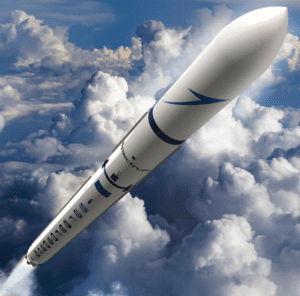
Our very first test flight is scheduled for late 2021 which is super ambitious, although for now we are well on track. Series A is definitely kicking in a lot on the development side. We are also scaling up the team with commercialization starting in the first half of 2022 when we will also fly missions dedicated towards our customers’ needs.
What’s your vision of launch frequency? How many rockets can you develop in parallel?
We’re initially planning to launch roughly 15 times per year. Taking into account the possibility of reusability, this might go up but it’s still early to say. The market requirement definitely is there. Today, it’s really about building the manufacturing processes, so we can produce a reliable and low cost launch vehicle. Our ability to build critical components completely in-house in Munich will enable us to dictate where the road is heading.
Are you targeting dual use customers, like governments or the military, as you will offer this fast access to space?
We’re in contact with different governments, not just for single satellites but also for satellite constellations and also for rapid launch. It’s definitely something we’re talking to the launch sites about because hosting a launch within an extremely short amount of time is not just an issue for the the launch vehicle and the launch team, but also on the launch site provider. We’re completely open to the strategic value of having a small to medium launch vehicle within Europe.
Can I finally ask about any political issues you faced here in Germany or in Europe with your idea?
It makes total sense to switch from a R&D funding programme style towards a customer programme style. If the government is paying for launch vehicles, why shouldn’t they get any launches for it? The commercial space transportation services programme is very well received at Isar Aerospace.
We’re also looking forward to launching satellites for the European Commission or for the European Space Agency or the German Aerospace Centre. This means that we Europeans also need to step up our game in terms of speed. It’s not yet too late to go full speed ahead on the entire space industry. The space industry is expected to become a trillion dollar industry over the course of the next 20 years so this is definitely a topic where politicians will have to take very bold actions to secure not just European access to space, but also the assets that we put to space.
SpaceWatch.Global thanks Daniel Metzler of Isar Aerospace for the interview.



